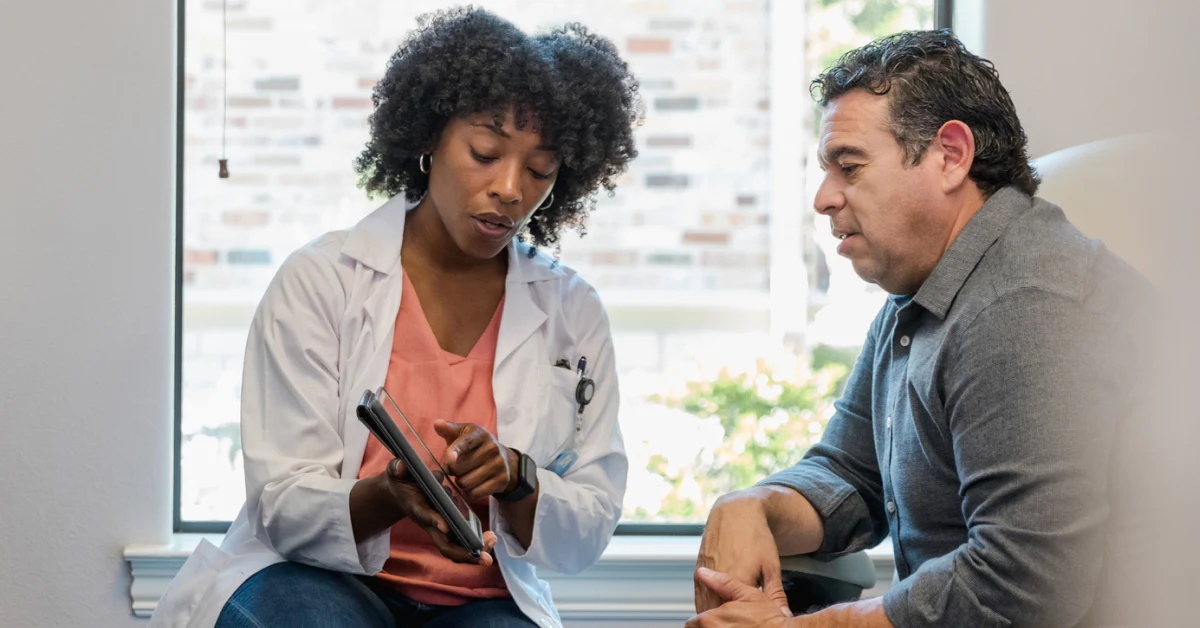Second Opinions Aren’t a Perk—They’re a Lifeline

“You need surgery.” With approximately 40-50 million surgeries performed annually in the U.S., this is a relatively common phrase and not often questioned.1 Unfortunately, the recommendation for surgery isn’t always the best course of action, which is why a second, more comprehensive look is often needed.
As the industry works to collectively solve for rising costs and declining quality, second opinions can be a vital lifeline. Expert second opinions can confirm diagnoses, enable alternative treatments, and uncover less invasive options, reducing the volume of unnecessary surgeries. Studies demonstrate that a significant number of second opinions lead to changes in diagnosis or treatment plans, especially in complex fields like bariatrics, cardiology, neurology, and orthopedics.2
Read on to understand how a multi-step clinical review approach, which includes an expert second opinion, can help reduce unnecessary surgeries, needless risks, and post-operative complications, while lowering the total cost of care and improving outcomes.
Unveiling the Silent Cost Driver
38% of recommended spine surgeries are found to be inappropriate.3
An unnecessary procedure, according to the National Institute of Health, is a medical intervention done when less invasive or non-surgical treatments would work as well or better, or when surgery isn't justified by a proper diagnosis.4 The negative impacts include complications from anesthesia, infection, prolonged recovery, and more - as well as the stress that comes with the physical and financial toll of invasive procedures.
Offering Options and Reassurance
It's time to stop accepting unnecessary procedures. By offering a surgery solution that is built to avoid unnecessary surgeries, reinforce quality care, and reduce readmissions and complications, benefits leaders can pave the way to improved cost savings and outcomes.
Expert second opinions can confirm or refine diagnoses—sometimes revealing important nuances—and present alternative treatments, including less invasive options. Research has found, for instance, that while surgery can be an effective means of treating disc herniation, 70% of soft disc extrusions may heal on their own with more conservative care options like physical therapy.4
Integrating clinical validation throughout care—from diagnosis to second opinion—ensures safe, evidence-based treatment. The benefits of this approach extend beyond physical. Additional expert reviews can offer peace of mind. Knowing that another qualified professional has reviewed the diagnosis, proposed treatment plan, and the Member’s complete medical history, can mitigate anxiety and encourage greater confidence in healthcare decisions.
Providing Proven Results
The evolution of employer healthcare strategies requires moving beyond just offering access to surgery for lower rates. It should guarantee that people receive the most appropriate care, all while cultivating a sense of confidence and security in the decisions being made. This is why Transcarent’s approach to surgery uses a multi-step clinical review process that includes expert second opinions, and:
Achieves a 0.05% readmission rate, the industry’s lowest.⁶
Prioritizes appropriate care over volume, with 23% of surgeries being avoided—and 90% of them staying that way 12 months later.⁶
Drives a 25% decrease in surgical PEPM when required use is implemented.⁶
Our industry-leading approach is shifting the conversation about Centers of Excellence (COE) programs and what success looks like. Transcarent measures success by the number of unnecessary surgeries avoided, not by the volume of completed surgeries. This is achieved through an integrated, multi-step clinical review process that meets the Member where they are, and our industry-leading readmissions rate demonstrates that this approach is working.
When a Member comes to Transcarent they have two options, depending on where they are in their care:
A Member with musculoskeletal pain or injury who hasn’t seen a doctor can connect with leading third-party orthopedic and sports medicine physicians within two days, directly from the app. Members receive a clear unbiased diagnosis, personalized care plan, and guidance on the next best step—whether it’s physical therapy, at-home exercises, or surgery when truly necessary.
If a Member already has a diagnosis and treatment plan, getting an expert second opinion is simple. Members (and their loved ones) can talk to a leading specialist from 2nd.MD in as little as three days via a live video or phone call.
If the Member is evaluated as an appropriate candidate for surgery, the next step is meeting with our nurse-led Care Team to review the plan and help the Member schedule surgery with a high-quality provider in the Transcarent COE network. Lastly, the COE surgeon conducts a final appropriateness review and works with the Member’s assigned nurse to optimize evidence-based pre- and post-operative protocols.
Building Trust and Delivering Better Outcomes
Employers can help ensure that every employee’s health journey is guided by the highest standards of clinical excellence by offering a comprehensive experience that integrates a network of multi-step clinician reviews, including expert diagnoses and second opinions and rigorous appropriateness assessments.
This strategy can empower employees to make clear, informed choices about their care with the reassurance that their treatment plan is thoroughly evaluated by specialists at multiple levels. As a result, Members aren’t left to navigate complex medical decisions on their own. Instead, they have One Place for guidance from a team of experts committed to helping them understand their options and choose the next step on their journey to better health.
Ready to reimagine your surgery care benefits? Contact us here.
Sources:
Transcarent is committed to providing accurate, evidence-based information to help you make informed health decisions.
Centers for Disease Control and Prevention. Inpatient and Ambulatory Surgery FastStats. Accessed July 2025. https://www.cdc.gov/nchs/fastats/inpatient-surgery.htm
Sharp, L., et al. Extent of Diagnostic Agreement in Patients Referred for Second Opinions. Mayo Clinic Proceedings. https://www.mayoclinicproceedings.org/article/S0025-6196(17)30345-0/fulltext
Mummaneni, P., et al. Appropriateness of Spine Surgery. The Spine Journal. https://www.sciencedirect.com/science/article/abs/pii/S1529943015004883
National Institutes of Health. Preventive Health Care. https://www.ncbi.nlm.nih.gov/pmc/articles/PMC5526216/
Weinstein, J.N., et al. Surgical vs. Nonoperative Treatment for Lumbar Disk Herniation (SPORT). NEJM. https://www.nejm.org/doi/full/10.1056/NEJMoa070868
Transcarent. Book of Business Results, 2024. Internal data.
Clavien PA, Dindo D, et al. The Clavien-Dindo Classification of Surgical Complications. Annals of Surgery. https://journals.lww.com/annalsofsurgery/Fulltext/2004/08000/The_Clavien_Dindo_Classification_of_Surgical.15.aspx
This article is not a substitute for professional medical advice. Always seek guidance from a physician or qualified provider regarding medical conditions.
